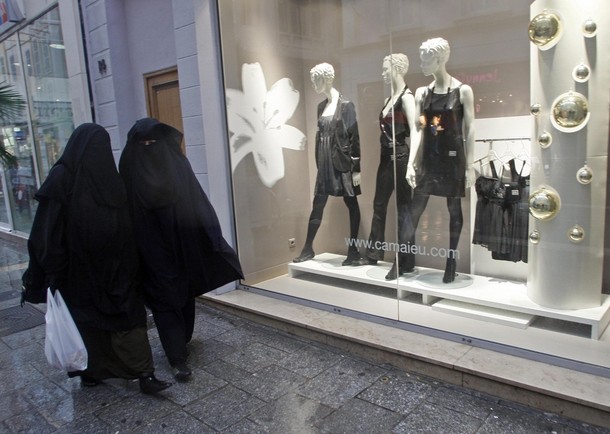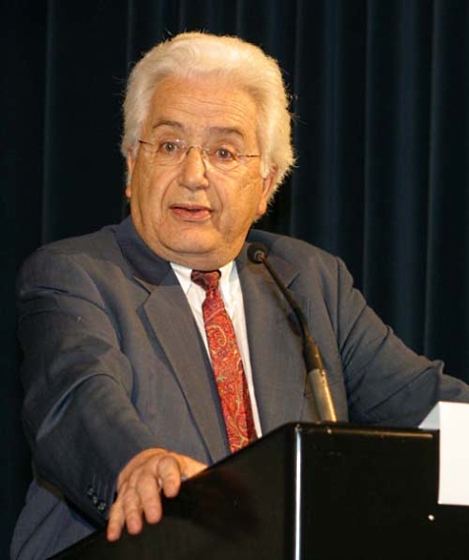
Whether we like it or not, we live and practice modernity, because it is not just a collection of statements that one can accept or reject, or even select. Modernity is an essential part of our life that we practice in every moment; it shapes our relation with the surrounding world and the society we belong to.
BY WAEL FAROUQ
THERE ARE, HOWEVER, some who reject modernity – even though they practice it – till the point of rupture, whereas other people identify with it to the point that they see their heritage, and related historical context, as an obstacle to progress.[1]
This contradiction reflects the deep fragmentation and tension of the contemporary Arab consciousness. This fragmentation has dissolved all confidence in an Arab discourse capable of carrying the burden of Renaissance and development, because every discourse is constantly categorized:
The notions brought forth by the modern and contemporary Arab discourse neither reflect nor give expression to the current Arab reality; they are borrowed, most of the time, either from the European thinking – where they refer to a reality which has come into effect (or is in the process of coming into effect) – or from the medieval Arabo-Islamic thinking – when they had a true, specific content (or it was believed so).[2]
This brings us to another mechanism of the contemporary Arab discourse: identification. Arab intellectuals, in general, are
prisoners of the traditional models of the Golden Age. This equally concerns traditionalists and modernists, for all of them think in a typically fundamentalist way. Traditionalists, in their various forms, think in terms of recovering the age of the Prophet, of the Rightly Guided Caliphs, or the Abbasid epoch; alternatively, they want to reproduce Averroes’ rationalism, Ibn Khaldūn’s realism or al-Shātibī’s theory of higher objectives and intents of Islamic law. Modernists of all kinds, on the other hand, think in terms of recovering the age of Renaissance, the classical era or the age of Enlightenment; or they try to reproduce Descartes’ methodology, Voltaire’s liberalism, Kant’s rationalism, Hegel’s historicism or Marx’s materialism. [3]
Thus, the Arab mind (both the traditional and modernist one) works according to the same mechanism, in spite of the different references it can adopt. It keeps transforming the intellectual production, both the traditional and the modernist, into an identity to belong to, instead of submitting its references to inquiry and research. The crisis of the Arab mind lies in a lack of harmony with time and space, or – better – in a lack of harmony between time and space: the traditionalist lives “here” but is estranged from the “now”, because he dwells in the glorious past; the modernist lives “now”, but is estranged from the “here”, because he lives “there”, conceptually, in the West. The main characteristic of the contemporary Arab discourse is indeed this lost harmony between the “now”, with its past history, and the “here”, with its surrounding context.
The crisis of the Arab mind lies in a lack of harmony with time and space
Modernity has generated a “special” culture, valid for a specific civilization and a specific time. However, it did not remain imprisoned in its cradle, but broke the barriers of time and space to become a universal phenomenon. The modernization movement across the world has led modernity to emerge “in the form of institutions, which are independent of the cultural, geographical and national contexts”.[4] Modernity has become associated with
an endless search for the knowledge of the universe’s secrets, to take control over it intellectually and scientifically, and a search for the constant elevation of the human being politically and socially, expressed in a continuous reform of principles and systems, which move the human society from the level of necessity to that of freedom, from exploitation to justice, from subordination to independence, from the authority of superstition, the tribe and the absolute ruler to the modern state.[5]
If the modernity we have known in our societies has coexisted in harmony with all of that, then it is not modernity in the strict scientific sense of the term.

Suggested Reading
This controversial relation between tradition and modernity in the Arab world has produced different types and images of both. The elements of modern culture which have been the focus of attention in the transformation process towards modernity, were of a particular nature: they had to do with consumption without production, external appearance without internal disposition, form without content, emotions and instincts without reason. The emerging tendency, in fact, is to take only the consumerist aspects without the rational bases at their origin.
We are not facing two separated worlds but rather a process of continuous remodeling
In its natural environment (i.e. the West), the appearance of modernity has implied the rupture with the traditions of the past, to the point that this breakup has become one of the prominent features of the notion of modernity itself. However, the modernity we have known in the Arab world has interacted with tradition in a different manner. It has established a complex relation with heritage, in which each of them has managed to adapt to the other and take control over it, while, at the same time, rejecting and fighting it. This resulted in a complicated process, in which both the modern and traditional cultures were constantly reformulated and remodeled. This has been the principal mechanism of modernity’s internal debate.
We are not facing two separated, or even conflicting, worlds, but rather a process of continuous remodeling, in which the two cultures merge into a special blend, giving birth to a “fake modernity”. By this I mean lifestyles, public views and behaviors that can neither be described as traditional nor as modern, but are a distorted mixture of both. It is a third culture, which relies on principles contrasting with those that have given rise to modernity, as it is understood in the West. However, these contrasting principles are not necessarily derived from traditions and heritage, for the “fake modernity” disfigures tradition as much as it disfigures the authentic manifestations of modernity. The best proof of this is the rejection of the rational dimension in both of them, i.e. the reason on which the Western modern civilization was founded and the reason at the basis of the Islamic heritage and civilization. On the contrary, “fake modernity” tends to lean on labyrinths of irrationality and on the exaltation of innate, instinctive feelings. This third culture reproduces itself in the midst of growing contradictions, which originate at the level of its basic components: heritage and modernity.
The mechanisms of modernity have worked at preserving the mentality of the religious discourse
In the light of this, it is possible to understand why the movement of ijtihād and religious enlightenment has faded away; why it did not extend, once it emerged in particular periods of our modern history, and why the religious discourse has simply turned into a rigid interpretation of the texts, both when it is in support and when it is in opposition to the ruling authority. This religious discourse is characterized by a lack of historicity, originating from
an uninterruptedly recurrent mental state that, whatever the historical circumstances, clashes and different socio-political developments, always moves from the assumption of the existence of an original Islam, in perfect agreement with the notion of a true religion.[6]
This “fake modernity” has not allowed the creative forces and the potentialities of rationality contained in this discourse to break free. Instead, the mechanisms of modernity have worked at preserving the mentality of the religious discourse; they have supported it – by creating close ties with both the political institutions and the ideological apparatuses – while inhibiting, at the same time, the rational, enlightened discourse. As a consequence, the traditional, religious discourse has become a tool to reproduce this mentality. Its lack of historicity has nurtured the rigid, irrational elements of heritage, while heritage has nurtured the formal, nonessential aspects of modernity.
[1] This article has been excerpted from the author’s academic paper Hats and Turbans, Adaptation to Modernity and Conventional Mind, New York, 2012.
[2] Muhammad ‘Ābid al-Jābrī, الخطاب العربي المعاصر: دراسة تحليلية نقدية Markaz Dirāsāt al-Wahda al-ʽArabiyya, Beirut, 1992, p.182.
[3] ‘Alī Harb, اوهام النخبة أو نقد المثقف Al-Markaz al-Thaqāfī al-ʽArabī, Casablanca, 1996, p.92.
[4] ‘Abd al-Latīf Sā’if, ملاحظات حول الحداثة في الخطاب العربي المعاصر Al-Mustaqbal al-ʽArabī, n.146, 1991, p.146.
[5] Jābir ‘Usfūr, هوامش على دفتر التنوير Cairo, 1993, p.13.
[6] Mohammed Arkoun, اين هو الفكر الإسلامي المعاصر London, 1992, p.52.


